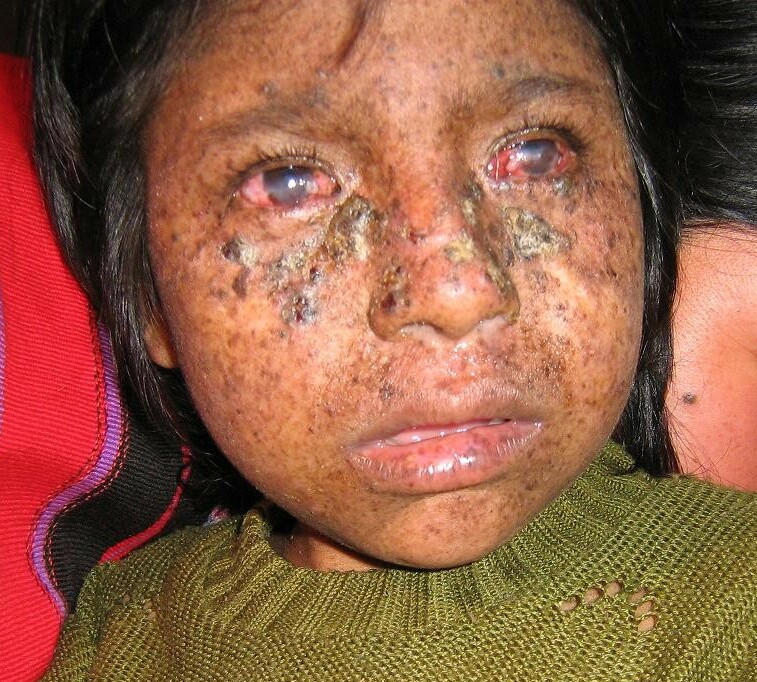Xeroderma Pigmentosum, Autosomal Dominant, Mild

Clinical Features
In addition to the usual severe, recessively inherited xeroderma pigmentosum (278700-278780), the existence of a milder form behaving as a dominant was claimed by Anderson and Begg (1950) who described 11 affected persons in 5 sibships of 4 generations of a Scottish family by the name of MacPherson. The patients showed freckling and multiple skin cancers as in the recessive form but did not get into trouble as early in life and survived longer. Indeed, Anderson and Begg examined 1 affected member of the family who was 74 years of age. No affected member was said to have died of the disease. Sedano (1984) raised doubts about this family. In the Scottish family, Anderson personally examined 7 members: 'Mr. George MacPherson, sen., his wife, George, jun., Harold, Lena, Douglas, and the son of George, jun. (Ian).' All these except the wife were said to be affected; the authors even raised the question of whether the wife might be 'a mild case;' was she in fact a carrier and is this an example of pseudodominance? Actually the father of 'George, sen.,' the authors stated, 'was known to have been affected.' Anderson and Begg (1950) were attracted to the possibility that this man's wife and the wife of 'George, sen.' were both heterozygotes. Skin tumors, mostly squamous epitheliomas, had onset as early as age 14. All the affected persons were 'rufous' (red-haired). Tests for increased sensitivity to ultraviolet light were equivocal or negative. Although the disorder in this kindred was milder than ordinary xeroderma pigmentosum ('George was in a tropical climate for many years, being invalided home on two occasions on account of the disease' and 'Douglas was invalided home from North Africa in 1943'), 'Douglas was considered to be a case of xeroderma pigmentosum by all the members present when he was shown at a meeting of the North British Dermatological Society in 1946.'
Imray et al. (1986) described an Australian kindred with persons in 5 generations affected by a mild form of XP. The features were marked xeroderma, generalized dark pigmentation, excessive freckling, and severe erythema in response to sunlight. Skin cancer was not common in this family; the proband had a melanoma and her mother had a basal cell carcinoma removed at age 70. Cleaver (1981) described autosomal dominant predisposition to multiple skin cancers in exposed facial skin. Fibroblasts from affected persons showed no defects in excision repair. On the other hand, in the Australian kindred, Imray et al. (1986) found, in studying lymphoblastoid cells and fibroblasts, cellular sensitivity to ultraviolet light as judged by diminished clonogenicity and increased frequency of UV-induced chromosome aberrations. After UV exposure, cells showed abnormally great depression of replicative DNA synthesis and the level of UV-induced DNA repair synthesis was lower than normal. The number of sister chromatid exchanges and 6-thioguanine-resistant mutants was not increased.